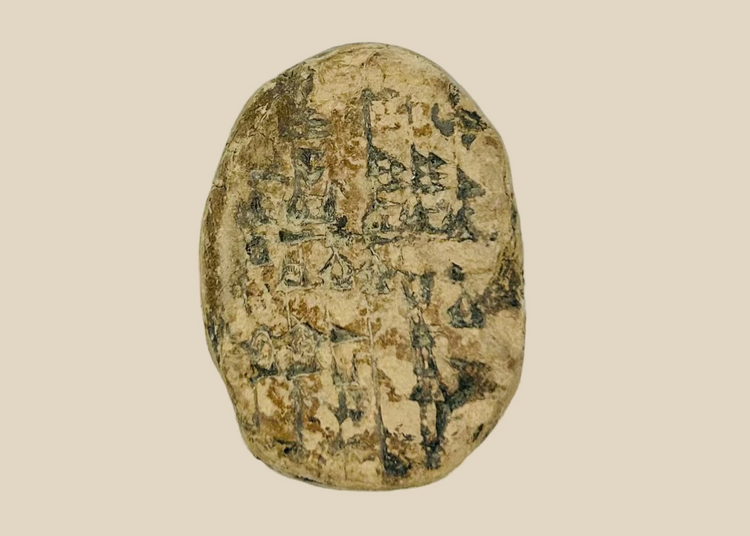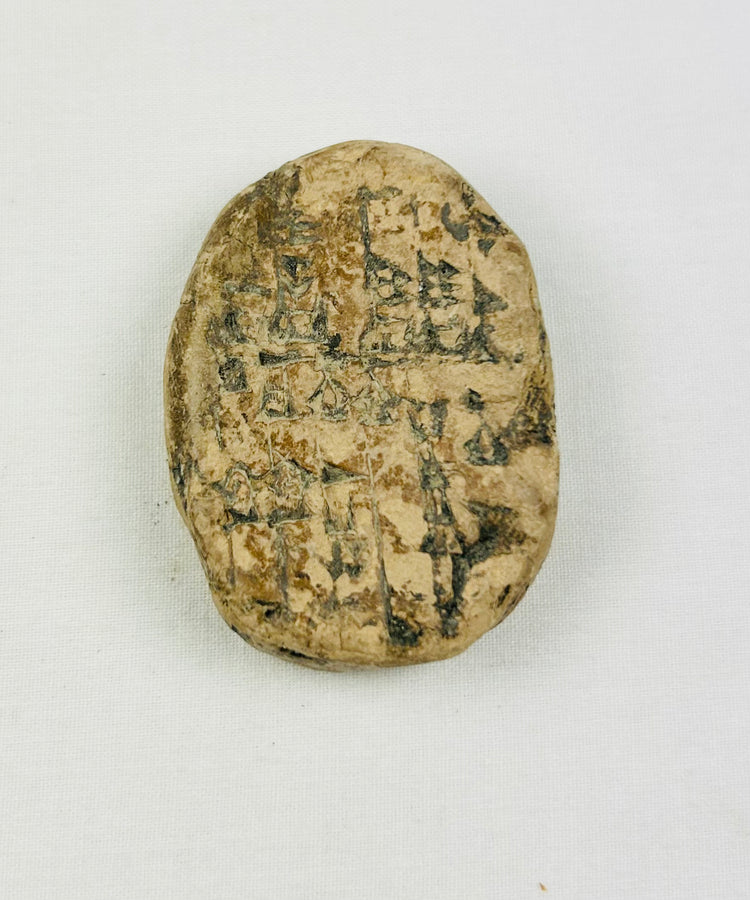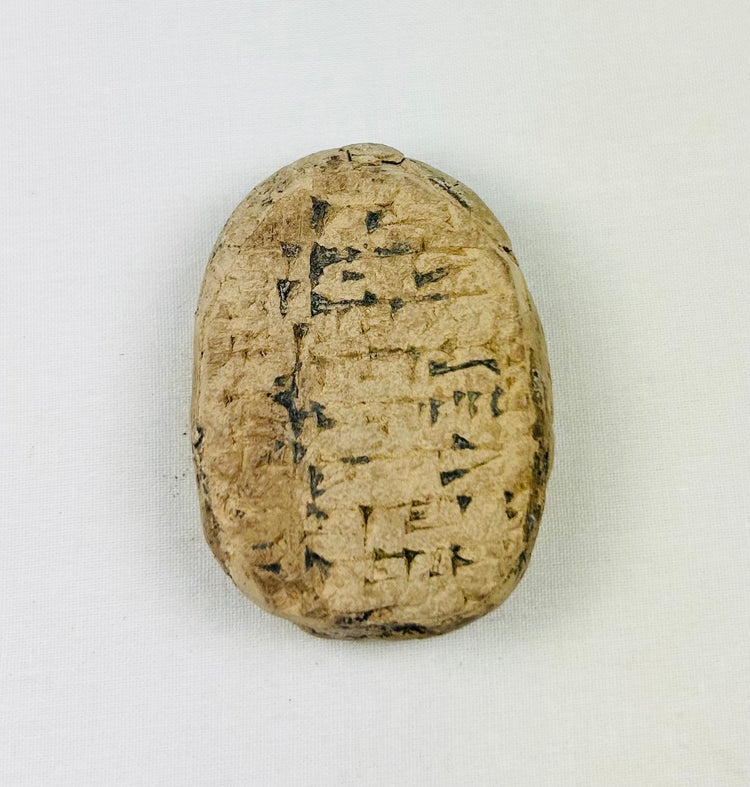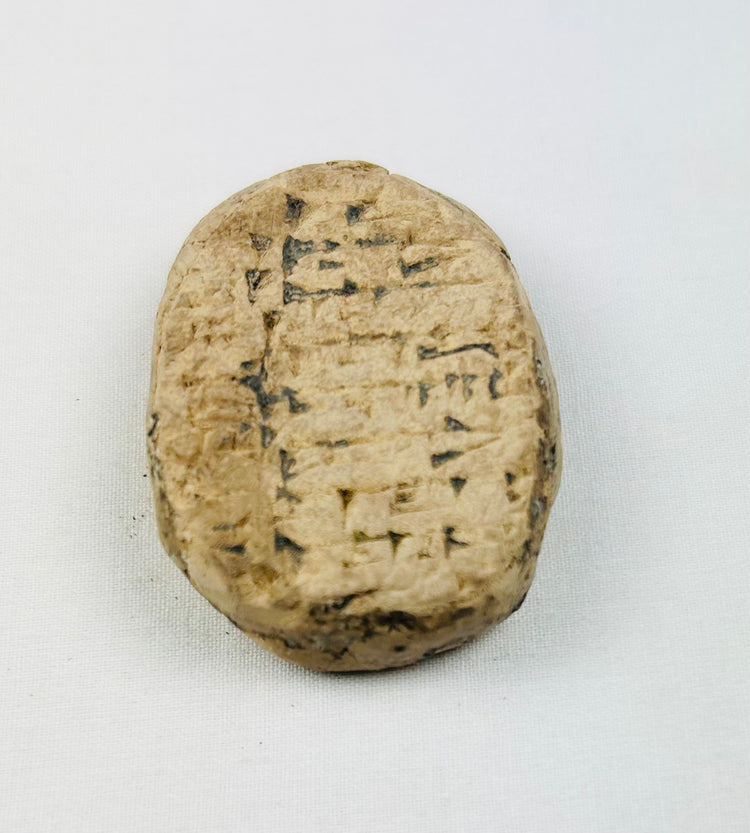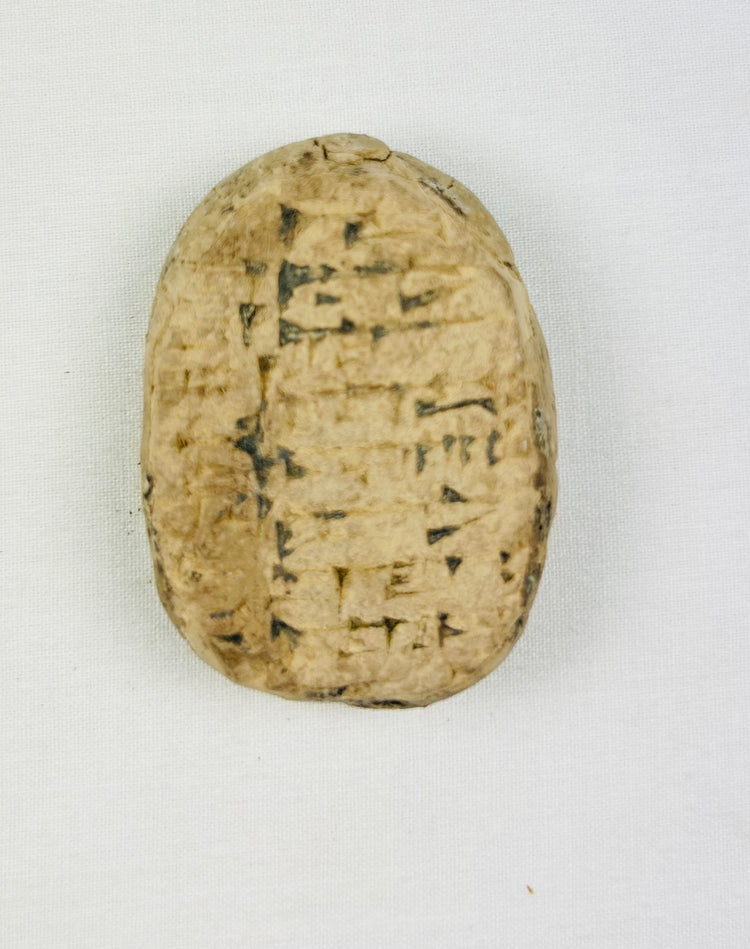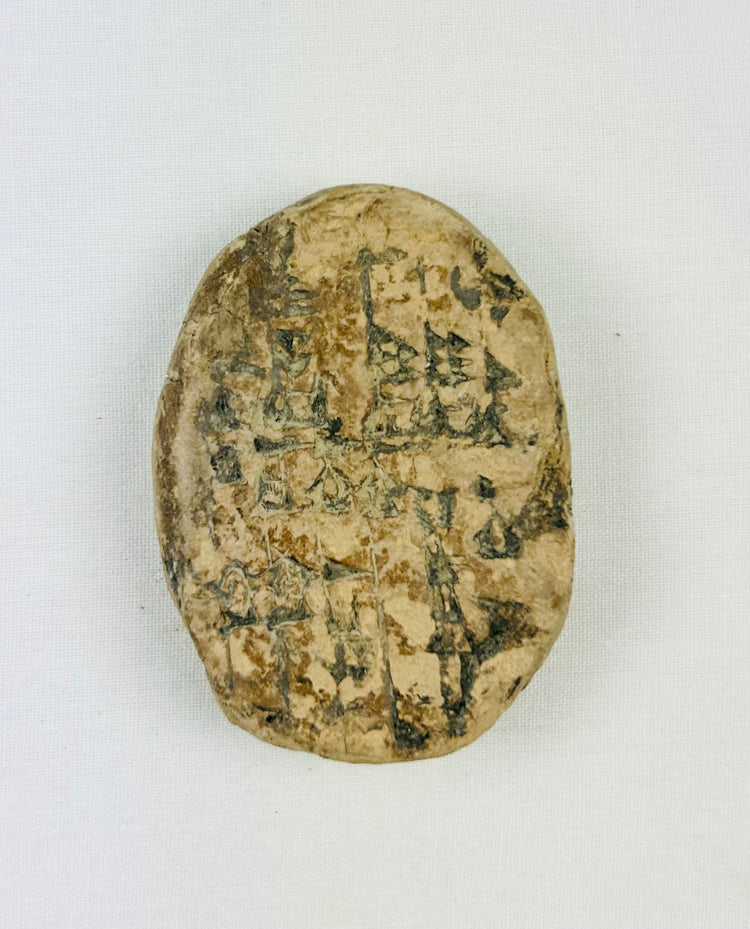Old Babylonian Cuneiform School Tablet | Mesopotamia | 1900–1600 BCE
Description
More
Less
Historical Context & Origin
Region: Mesopotamia (southern Iraq; Babylonian heartland)
Material: Baked clay with cuneiform impressions; earthen/mineral accretions in wedges
Period: Old Babylonian, circa 1900–1600 BCE (2nd millennium BCE)
Description
This bi-faced, lenticular cuneiform school tablet is a classic example of an ancient Mesopotamian student’s exercise. The obverse displays short horizontal lines of script separated by a faint vertical ruling, while the reverse carries additional signs with a central guide line—both hallmarks of copy-books used for training scribes. The wedge impressions vary in depth and orientation, reflecting the uneven stylus work of a learner rather than a professional scribe. The warm buff clay retains mineral accretions within the strokes, enhancing legibility and attesting to its long burial history.
Features
- Two-sided cuneiform inscription with ruled guidelines
- Palm-sized oval/lenticular form for student practice (edubba)
- Uneven stylus impressions typical of a trainee hand
- Warm buff surface with earthen and mineral deposits
- Crisp wedge orientations consistent with Old Babylonian ductus
Cultural Significance
Scribal schools (edubba) in Old Babylonian Mesopotamia trained students to master hundreds of cuneiform signs before advancing to literary, legal, and mathematical texts. Small school tablets like this represent one of the world’s earliest systems of formal education and stand as direct artifacts of the invention of writing itself. They are highly sought after by collectors and institutions for their cultural importance and accessibility as pieces of ancient literacy.
Condition
Stable and intact with minor edge wear and abrasion from antiquity. Wedges remain legible, with soil deposits and mineral accretions preserved in recesses. Small chips and handling marks consistent with authentic ancient use.
Dimensions (approximate)
Height: 1.75 in
Width: 1.25 in
Age
Old Babylonian, circa 1900–1600 BCE
Description
Historical Context & Origin
Region: Mesopotamia (southern Iraq; Babylonian heartland)
Material: Baked clay with cuneiform impressions; earthen/mineral accretions in wedges
Period: Old Babylonian, circa 1900–1600 BCE (2nd millennium BCE)
Description
This bi-faced, lenticular cuneiform school tablet is a classic example of an ancient Mesopotamian student’s exercise. The obverse displays short horizontal lines of script separated by a faint vertical ruling, while the reverse carries additional signs with a central guide line—both hallmarks of copy-books used for training scribes. The wedge impressions vary in depth and orientation, reflecting the uneven stylus work of a learner rather than a professional scribe. The warm buff clay retains mineral accretions within the strokes, enhancing legibility and attesting to its long burial history.
Features
- Two-sided cuneiform inscription with ruled guidelines
- Palm-sized oval/lenticular form for student practice (edubba)
- Uneven stylus impressions typical of a trainee hand
- Warm buff surface with earthen and mineral deposits
- Crisp wedge orientations consistent with Old Babylonian ductus
Cultural Significance
Scribal schools (edubba) in Old Babylonian Mesopotamia trained students to master hundreds of cuneiform signs before advancing to literary, legal, and mathematical texts. Small school tablets like this represent one of the world’s earliest systems of formal education and stand as direct artifacts of the invention of writing itself. They are highly sought after by collectors and institutions for their cultural importance and accessibility as pieces of ancient literacy.
Condition
Stable and intact with minor edge wear and abrasion from antiquity. Wedges remain legible, with soil deposits and mineral accretions preserved in recesses. Small chips and handling marks consistent with authentic ancient use.
Dimensions (approximate)
Height: 1.75 in
Width: 1.25 in
Age
Old Babylonian, circa 1900–1600 BCE
You May Also Like




















